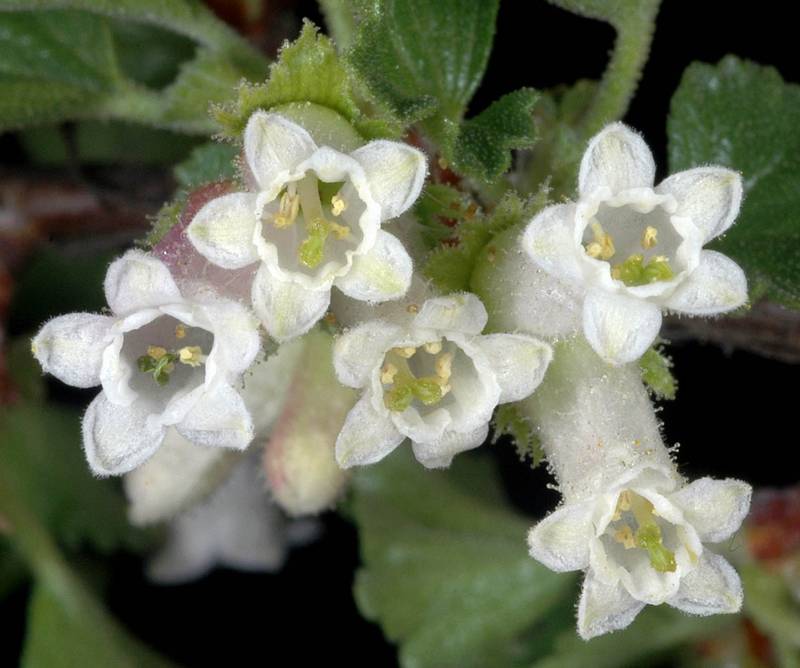Ribes cereum
Ribes americanum
wax currant
Leaves alternate, reniform to fan-shaped with a wedge-shaped base, 1.5-2.5 cm. broad, palmately 3- or 5-lobed much less than half their length, the lobes with rounded teeth.
Flowers 2-8 in short racemes on peduncles much shorter than the leaves, the entire inflorescence pubescent and glandular;
pedicels shorter than the bracts;
calyx tube cylindric, 6-8 mm. long, the 5 lobes deltoid-ovate, spreading;
lobes and tube greenish-white to white or strongly pinkish-tinged, 1.5-3 mm. long;
petals spatulate-obovate, 1-2 mm. long, half exserted;
stamens 5, shorter than the petals;
styles 2, fused nearly full length;
ovary inferior, sparingly glandular.
Berry ovoid, 6-8 mm. long, dull or bright orange or red.
Ribes cereum
Ribes americanum
- Local floras:
BC,
CA,
OR,
WA
- Local Web sites:
CalFlora,
CalPhotos,
Flora NW,
PNW Herbaria,
Turner Photog.
WildflowerSearch
iNaturalist (observations)
USDA Plants Database
- LBJ Wildflower Center
- SEINet
- Plants of the World Online
- Encyclopedia of Life
- Wikipedia
- Google Image Search


